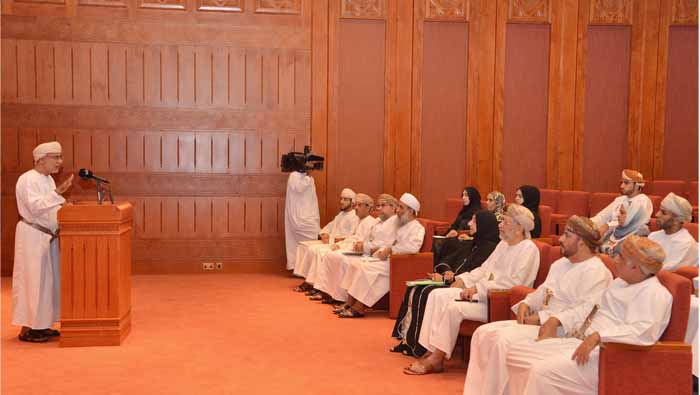
Muscat: A number of The Research Council (TRC) officials in-charge of implementing the National Innovation Strategy were hosted by the State Council and Majlis Al Shura yesterday.
The meeting was attended by heads of the State Council and Majlis Al Shura committees, their deputies, the Secretary General of the State Council, the Secretary General of Majlis Al Shura, Dr. Hilal bin Ali Al Hinai, Secretary General of TRC and a number of researchers at the State Council and Majlis.
Dr. Khalid bin Salim Al Saeedi, Secretary General of the State Council, who delivered the keynote speech, pointed out that the importance of scientific research and innovation is gaining momentum in today's world as they are the pillars for the progress and development of nations, as well as the knowledge based economy.
He said that the Sultanate attaches remarkable interest in this area in response to the royal orders of His Majesty Sultan Qaboos bin Said.
Dr. Hilal bin Ali Al Hinai, Secretary General of TRC delivered a speech where he pointed out that there is a global interest in innovation and that states develop national systems for innovation. These systems include the basis for research and development, marketing and innovation legal frameworks. He stressed the importance of effective integration and interconnection among all elements involved in innovation.
Dr. Sharifa bint Hamoud Al Harthiyah, senior planning and studies specialist at TRC and head of the National Innovation Strategy Project reviewed the strategy and explained its aim and vision.
She pointed out that the Higher Steering Committee, chaired by His Highness Sayyid Shihab bin Tariq Al Said, Advisor to His Majesty the Sultan and Chairman of TRC, has five ministers as members.
She pointed out that the Sultanate has earned 21 additional points in global innovation index between 2013 and 2015 due to increase in the research and innovation programs and providing the healthy milieu for innovation. She noted that the Sultanate ranking upped by 21 point in 2015 compared to 2013.